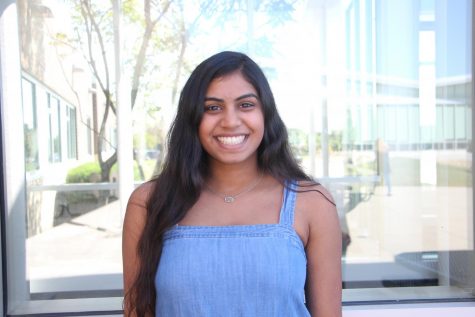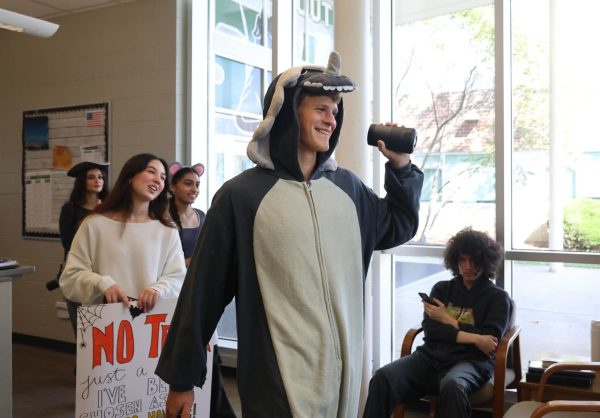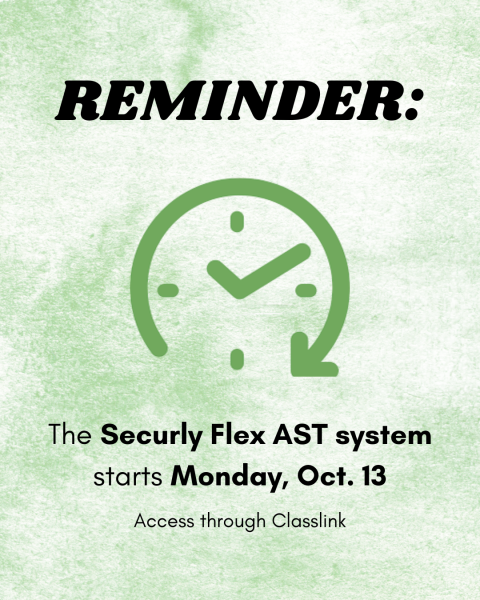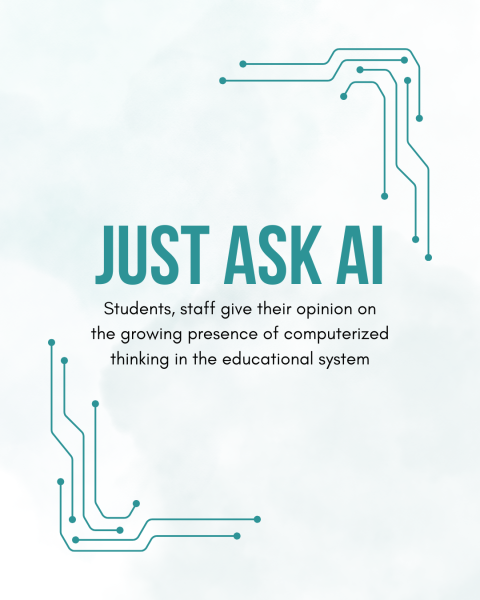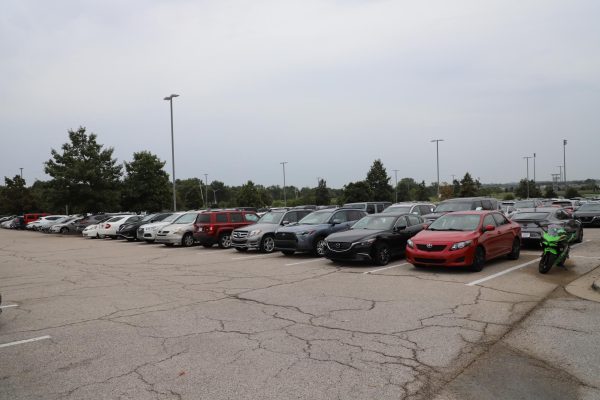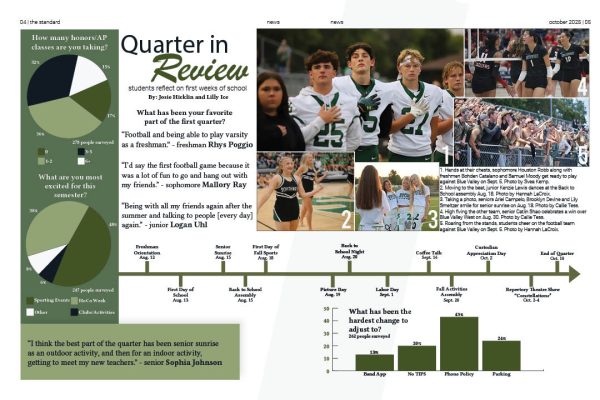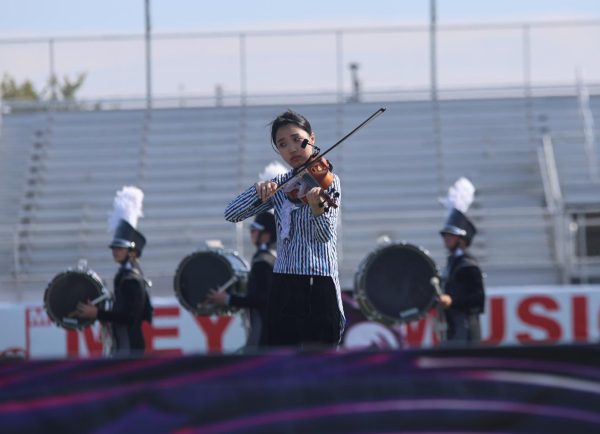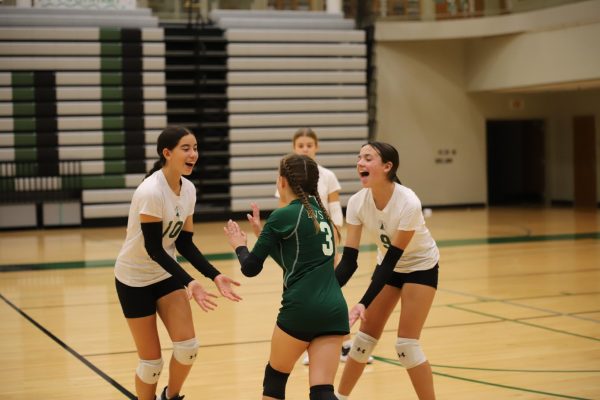Students and staff explain the difficulties through restricted wifi
Poor cellular connection, restricted wifi and buffering are features of the Social Media block students face at school. Students connecting to the schools wifi encounter restrictions through their access to Social Media accounts during the school day. However, a recent unblocking could mean the freedom to use social media whenever and wherever students want.
Aware of the problem of Social Media being blocked last year, freshman Mason Behrens said he receives “none, almost zero” cellular connection in school but still uses the school’s wifi. Behrens said blocking Social Media doesn’t make it hard to communicate with teachers, but is difficult when connecting to Canvas.
“It doesn’t really affect me because I don’t need to be on my social media during class or anything, and passing period is about five minutes so there’s nothing I can really do,” Behrens said. “I’ve tried the VPN app but it didn’t really work so I just stopped.”
Similar to Behrens, social studies teacher Laura Williamson has access to social media accounts including Twitter, Instagram, and Facebook. Williamson said she uses her cheer Twitter account to help promote events at the school, along with using her teacher Twitter account to tweet out reminders, assignments, links and rubrics for students in her class.
“[As] teachers, we have a separate wifi that we access, and we don’t have as many filters for what we can and cannot see when we’re in the school building,” Williamson said.
Furthermore, she said Social Media has been useful when it comes to assignments.
“I know that in my geography class last year, I had kids find pictures of a location they wanted to visit and actually tweet the pictures at me or submit them in a direct message from instagram because it was just easier for them to do it on their phones than to try and save the picture, , attach it in an email and send it to me, when it would just send it right through,” Williamson said.
However, she said she is not in 100 percent agreement that the school should unblock Social Media.
“I feel like when you’re in the school building, you should be here to learn,” Williamson said. “There’s so much other time in the day you can socialize, but I also understand that during Timber Time maybe some kids just need to relax and look at funny memes online or something to take their mind off of their test that’s coming up and sometimes that can be helpful. So it has its advantages when you use it during school, but there are also disadvantages. Because if we unblocked everything, I think we would lose a lot of kids in engagement because they would be into their phones more than normal.”
Unlike Williamson, junior Betsy Burress said unblocking social media is necessary because kids still find a way to get around the wifi to use it during the school day, and that unblocking Social Media would make things easier. As the owner of a Snapchat, Instagram and Twitter account, Burress said she disconnects her wifi and uses her data plan to check Social Media.
“It kind of annoyed me just because of the amount of data I went through every month just being at school,” Burress said. “I knew that [social media] was blocked, but I really like that it is unblocked now because it makes my data usage a lot less.”
In addition to Burress’s views on being able to use less data through unrestricted wifi, Brian Daley, chief information officer for the district, said students would see a change to unblock restrictions through the wifi access point students are using at school. Being new to the district this year, Daley said he came from a district with similar questions about the wifi not being “freed up
attach it in an email and send it to me, when it would just send it right through,” Williamson said.
However, she said she is not in 100 percent agreement that the school should unblock Social Media.
“I feel like when you’re in the school building, you should be here to learn,” Williamson said. “There’s so much other time in the day you can socialize, but I also understand that during Timber Time maybe some kids just need to relax and look at funny memes online or something to take their mind off of their test that’s coming up and sometimes that can be helpful. So it has its advantages when you use it during school, but there are also disadvantages. Because if we unblocked everything, I think we would lose a lot of kids in engagement because they would be into their phones more than normal.”
Unlike Williamson, junior Betsy Burress said unblocking social media is necessary because kids still find a way to get around the wifi to use it during the school day, and that unblocking Social Media would make things easier. As the owner of a Snapchat, Instagram and Twitter account, Burress said she disconnects her wifi and uses her data plan to check Social Media.
“It kind of annoyed me just because of the amount of data I went through every month just being at school,” Burress said. “I knew that [social media] was blocked, but I really like that it is unblocked now because it makes my data usage a lot less.”
In addition to Burress’s views on being able to use less data through unrestricted wifi, Brian Daley, chief information officer for the district, said students would see a change to unblock restrictions through the wifi access point students are using at school. Being new to the district this year, Daley said he came from a district with similar questions about the wifi not being “freed up enough to allow Social Media.”
“Our district is sending out communication for parents in our community and a lot of them are meant for students, but they are not able to access that content while in school because we had it blocked,” Daley said. “I went through an extensive process last spring to upgrade and overhaul part of our infrastructure that’s responsible for filtering … We are replacing some antiquated equipment including our old web content filter and replacing it with what they call a ‘next generation’ web content filter. This allows us to have more flexibility.”
He said the district uses Social Media to send out messages to parents and students. Also, Daley said the problems students were facing with Social Media were due to old technology not allowing the district to create new policies. Another reason Daley said he wanted to open up social media to students is because teachers are using it to give instructions in class.
“How can we have teachers assign homework or projects based around social media or YouTube if we don’t allow students access to it, or say you can only do this once you go home?” Daley said. “As we reinvent and innovate and we change how we want to do instruction in the classroom and create more uses for digital tools we have to allow more openness with Social Media and websites to allow you to view content like YouTube.”
Daley said he believes if teachers are using social media instructionally, then students should be able to have access, too. He said he aims to eliminate restrictions on student-accessed wifi.
“Another reason we’re open to opening up Social Media … is when it’s fully restricted, what happens is anybody at school will flip right over to their data and they’re accessing Social Media anyway, so if we restrict [it], they are going to go an alternate route,” Daley said. “If we open up, students are going to stay with us – stay on our network –where it’s safe and we allow social media in a safe platform. So you [should] start seeing things like YouTube, and Social Media incrementally opening up over the next couple of weeks, as we test and vet out our new filter, and then come to where everything’s on board and functioning, and then you’ll get the full result, which hopefully is a good one.”
| ishapatel


